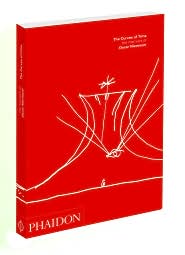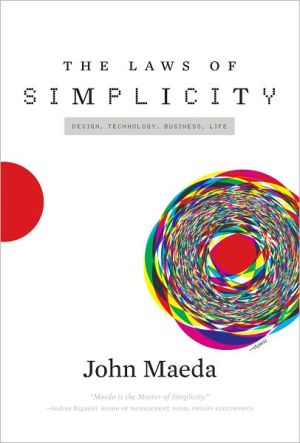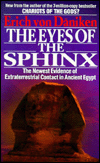Bauhaus Group: Six Masters of Modernism
"Nicholas Fox Weber, for thirty-three years head of the Albers Foundation, spent many years with Anni and Josef Albers, the only husband-and-wife artistic pair at the Bauhaus (she was a textile artist; he a professor and an artist, in glass, metal, wood, and photography). The Alberses told him their own stories and described life at the Bauhaus with their fellow artists and teachers, Walter Gropius, Paul Klee, Wassily Kandinsky, Ludwig Mies van der Rohe, as well these figures' lesser-known...
Search in google:
Nicholas Fox Weber, for thirty-three years head of the Albers Foundation, spent many years with Anni and Josef Albers, the only husband-and-wife artistic pair at the Bauhaus (she was a textile artist; he a professor and an artist, in glass, metal, wood, and photography). The Alberses told him their own stories and described life at the Bauhaus with their fellow artists and teachers, Walter Gropius, Paul Klee, Wassily Kandinsky, Ludwig Mies van der Rohe, as well these figures’ lesser-known wives and girlfriends. In this extraordinary group biography, Weber brilliantly brings to life the Bauhaus geniuses and the community of the pioneering art school in Germany’s Weimar and Dessau in the 1920s and early 1930s.Here are: Walter Gropius, founder of the Bauhaus, the architect who streamlined design early in his career and who saw the school as a place for designers to collaborate in an ideal setting . . . a dashing hussar, the ardent young lover of the renowned femme fatale Alma Mahler, beginning when she was the wife of composer Gustav Mahler . . . Paul Klee, the onlooker, smoking his pipe, observing Bauhaus dances as well as his colleagues’ lectures from the back of the room . . . the cook who invented recipes and threw together his limited ingredients with the same spontaneity, sense of proportion, and fascination that underscored his paintings . . . Wassily Kandinsky, the Russian-born pioneer of abstract painting, guarding a secret tragedy one could never have guessed from his lively paintings, in which he used bold colors not just for their visual vibrancy, but for their “sound” effects . . . Josef Albers, who entered the Bauhaus as a student in 1920 and was one of the seven remaining faculty members when the school was closed by the Gestapo in 1933 . . .Annelise Else Frieda Fleischmann, a Berlin heiress, an intrepid young woman, who later, as Anni Albers, made art the focal point of her existence . . . Ludwig Mies van der Rohe, imperious, decisive, often harsh, an architect who became director—the last—of the Bauhaus, and the person who guided the school’s final days after SS storm troopers raided the premises.Weber captures the life, spirit, and flair with which these geniuses lived, as well as their consuming goal of making art and architecture. A portrait infused with their fulsome embrace of life, their gift for laughter, and the powerful force of their individual artistic personalities.Library JournalWeber (executive director, Josef & Anni Albers Fdn.; Le Corbusier: A Life) offers a cross section of the personal lives of six artists and architects of the Bauhaus. Walter Gropius, Paul Klee, Wassily Kandinsky, Josef and Anni Albers, and Ludwig Mies van der Rohe are each described, with special attention paid to the fortitude, ambition, or passion for art that characterized their tenure at the school. Much has been written about the Bauhauslers, but Weber adds his personal recollections of the Alberses, whom he first met as a student in the 1970s. The chapters on them and their views on the other four subjects are the most engaging; elsewhere, the strict focus on the years before and during the Bauhaus excludes much fascinating post-1933 history, and the exhaustive detailing of repetitious episodes bogs down the narrative. VERDICT The sheer volume of text may overwhelm readers interested in the often tumultuous lives of the Bauhauslers, but those who persevere, or make use of judicious skimming, will be rewarded for their efforts.—Amy Trendler, Ball State Univ. Libs., Muncie, IN
List of Illustrations ix\ Klee's Birthday Party xiii\ Walter Gropius 3\ Paul Klee 95\ Wassily Kandinsky 204\ Josef Albers 259\ Anni Albers 341\ Ludwig Mies van der Rohe 416\ The Bauhaus Lives 463\ Acknowledgments 487\ Notes 491\ Index 503
\ Library JournalWeber (executive director, Josef & Anni Albers Fdn.; Le Corbusier: A Life) offers a cross section of the personal lives of six artists and architects of the Bauhaus. Walter Gropius, Paul Klee, Wassily Kandinsky, Josef and Anni Albers, and Ludwig Mies van der Rohe are each described, with special attention paid to the fortitude, ambition, or passion for art that characterized their tenure at the school. Much has been written about the Bauhauslers, but Weber adds his personal recollections of the Alberses, whom he first met as a student in the 1970s. The chapters on them and their views on the other four subjects are the most engaging; elsewhere, the strict focus on the years before and during the Bauhaus excludes much fascinating post-1933 history, and the exhaustive detailing of repetitious episodes bogs down the narrative. VERDICT The sheer volume of text may overwhelm readers interested in the often tumultuous lives of the Bauhauslers, but those who persevere, or make use of judicious skimming, will be rewarded for their efforts.—Amy Trendler, Ball State Univ. Libs., Muncie, IN\ \ \ \ \ Kirkus ReviewsAn art historian offers six largely flattering portraits of key members of the famed Bauhaus group that flourished in Germany in the 1920s, then died when the Nazis enforced their own definitions of art and its functions. Weber (Le Corbusier: A Life, 2008, etc.) profiles some of the most iconic figures in modern-art history, including Paul Klee and Wassily Kandinsky, who, the author demonstrates, were fine friends, not rivals. The journey begins with Walter Gropius, founder of the Bauhaus school, and this section provides the rough structure for the subsequent ones. General comments about his significance segue into a biographical sketch and a detailed examination of his career at the Bauhaus, followed by another quick summary of the subject's post-Bauhaus career and death. Weber quotes liberally from correspondence, provides a wealth of illustrations and offers his running assessment of each person's contributions to art history. The author clearly admires-even reveres-these six figures. Klee "brought the liberating spirit of surrealism to the Bauhaus"; Kandinsky "altered the course of world art." Weber reserves his most intimate praise for Josef and Anni Albers, whom he befriended late in their lives and whose eponymous charitable foundation he now directs. The author, in fact, was the executor of Anni's will, and relates an uncomfortable anecdote about the odd pleasure he took in informing actor Maximilian Schell that Anni had excluded him from mention or bequest. In the final 200 pages Weber adopts the first-person voice, becoming a character in the story. A rigorously researched and often fascinating history that morphs into memoir. Author tour to New York and Washington, D.C.\ \








